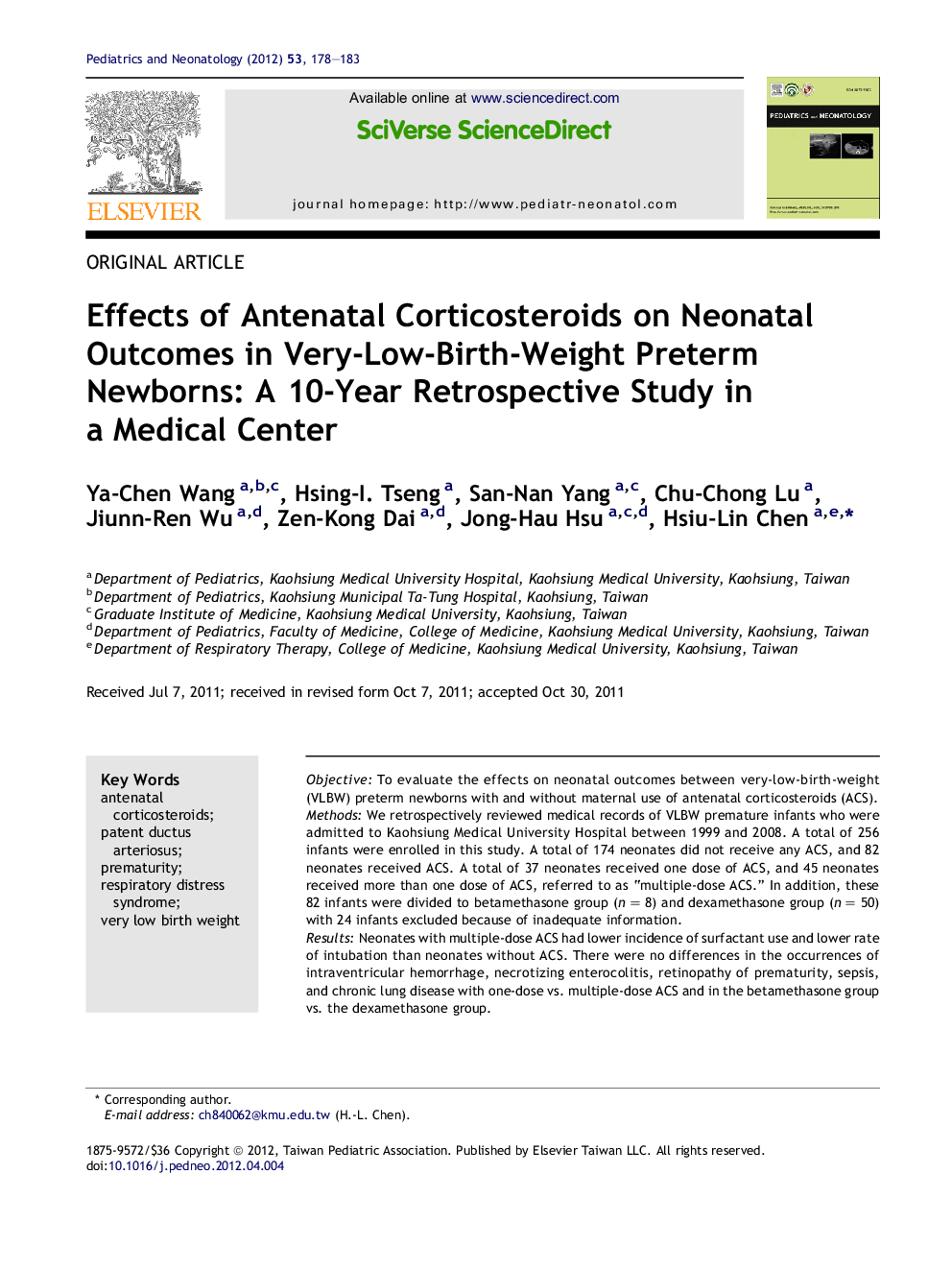| Article ID | Journal | Published Year | Pages | File Type |
|---|---|---|---|---|
| 4175288 | Pediatrics & Neonatology | 2012 | 6 Pages |
ObjectiveTo evaluate the effects on neonatal outcomes between very-low-birth-weight (VLBW) preterm newborns with and without maternal use of antenatal corticosteroids (ACS).MethodsWe retrospectively reviewed medical records of VLBW premature infants who were admitted to Kaohsiung Medical University Hospital between 1999 and 2008. A total of 256 infants were enrolled in this study. A total of 174 neonates did not receive any ACS, and 82 neonates received ACS. A total of 37 neonates received one dose of ACS, and 45 neonates received more than one dose of ACS, referred to as “multiple-dose ACS.” In addition, these 82 infants were divided to betamethasone group (n = 8) and dexamethasone group (n = 50) with 24 infants excluded because of inadequate information.ResultsNeonates with multiple-dose ACS had lower incidence of surfactant use and lower rate of intubation than neonates without ACS. There were no differences in the occurrences of intraventricular hemorrhage, necrotizing enterocolitis, retinopathy of prematurity, sepsis, and chronic lung disease with one-dose vs. multiple-dose ACS and in the betamethasone group vs. the dexamethasone group.ConclusionsACS reduces the need for exogenous surfactant, and the need for endotracheal tube insertion at birth in VLBW premature infants.
